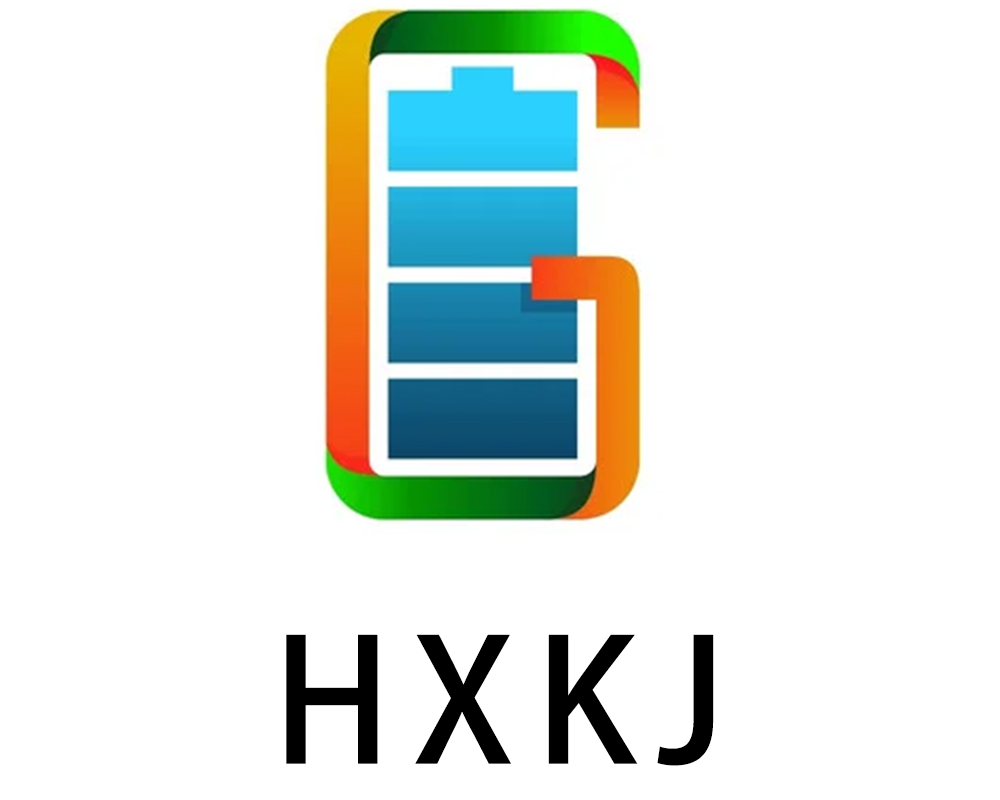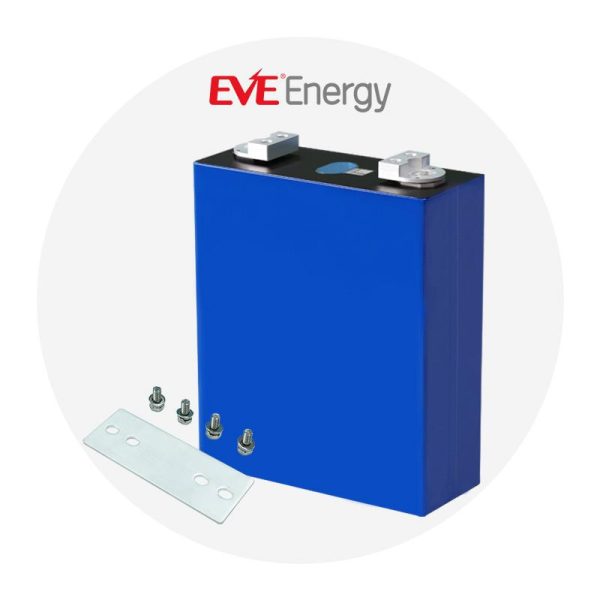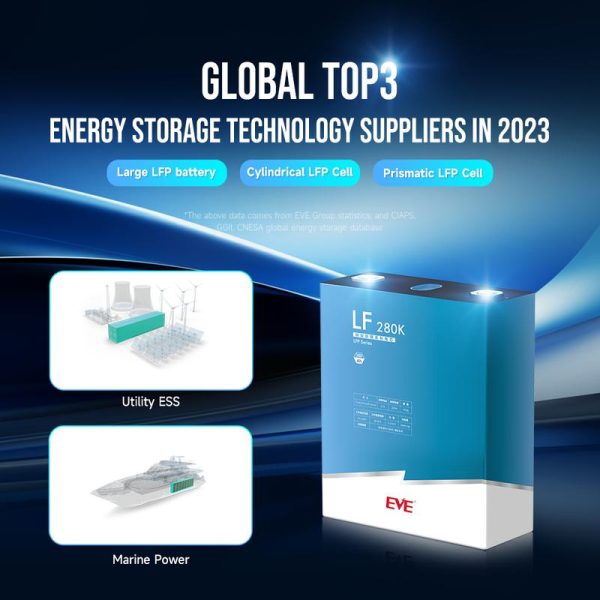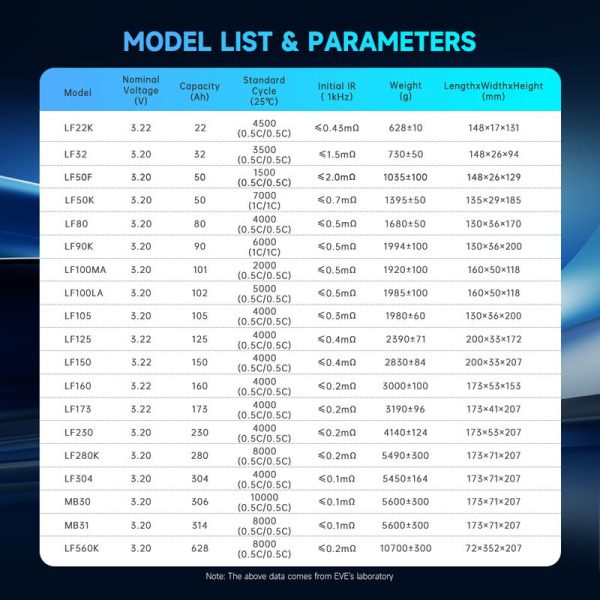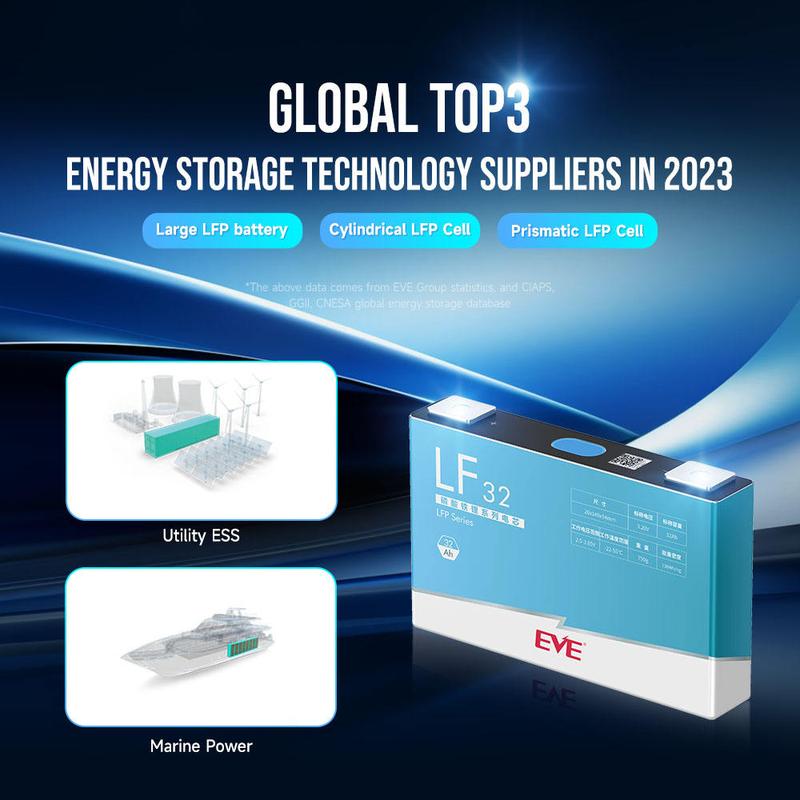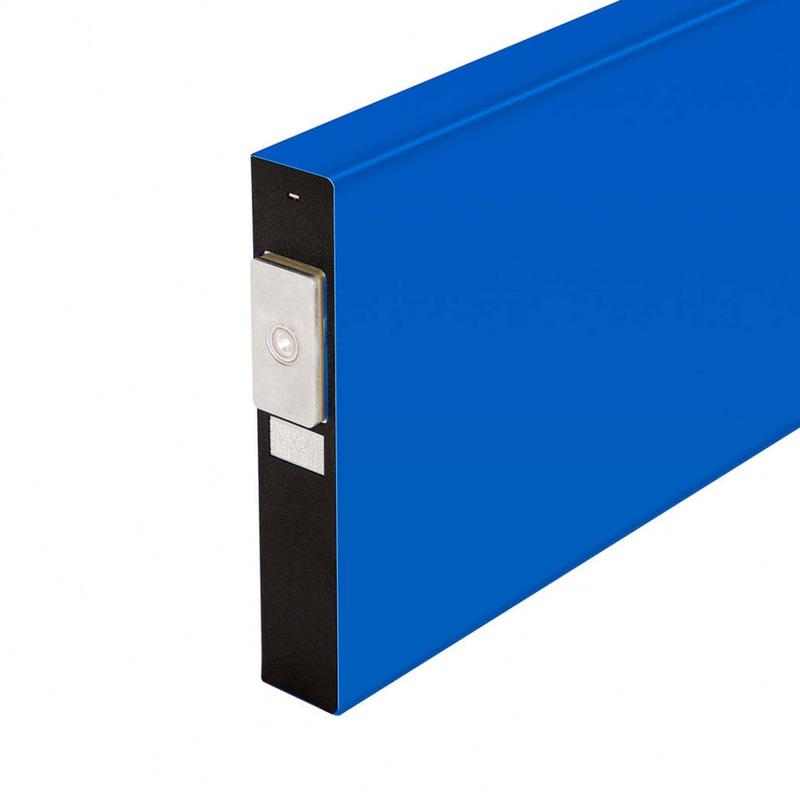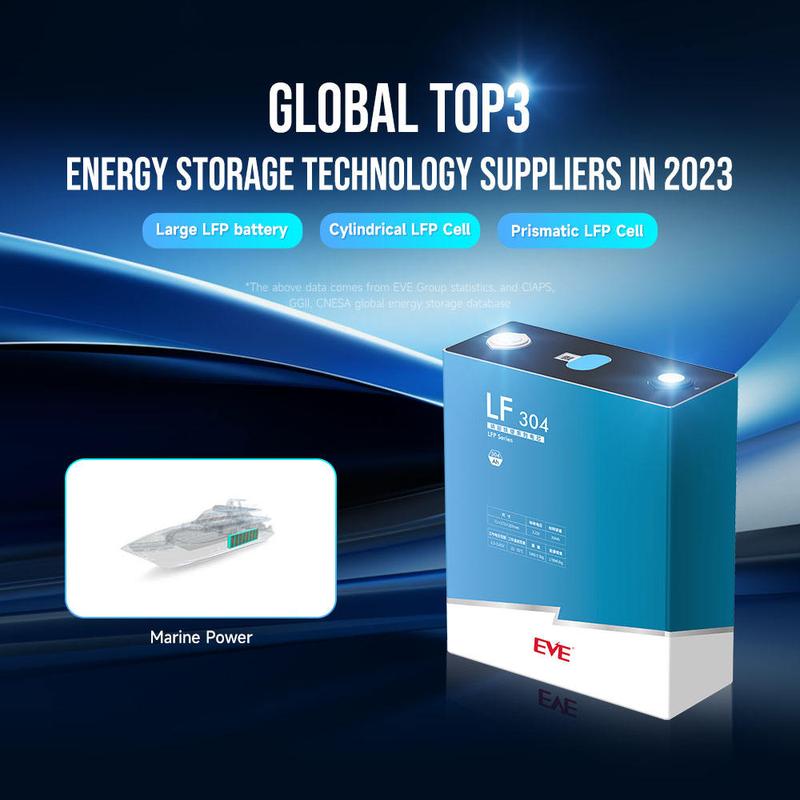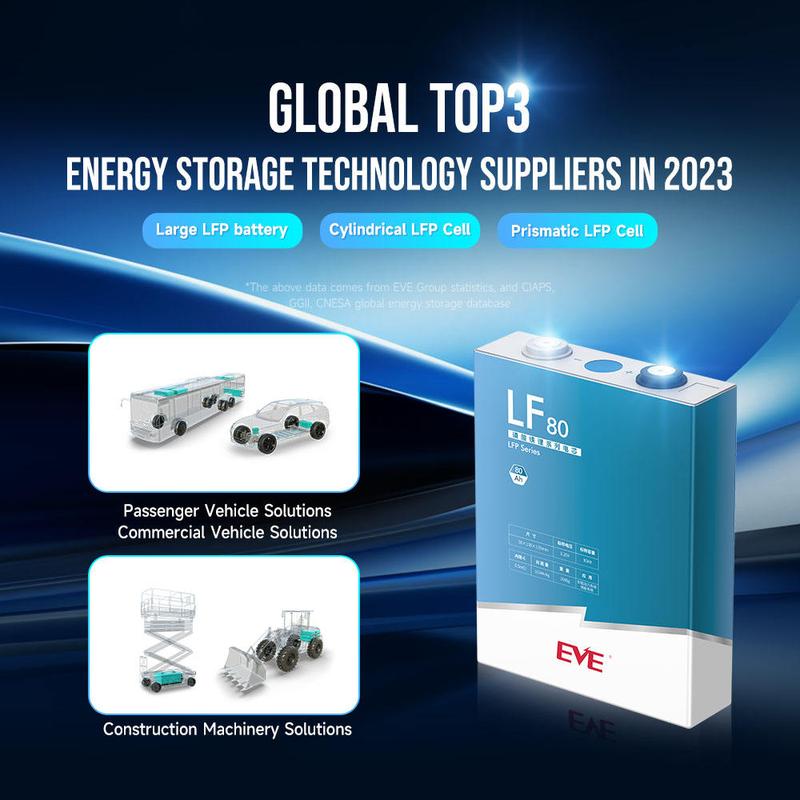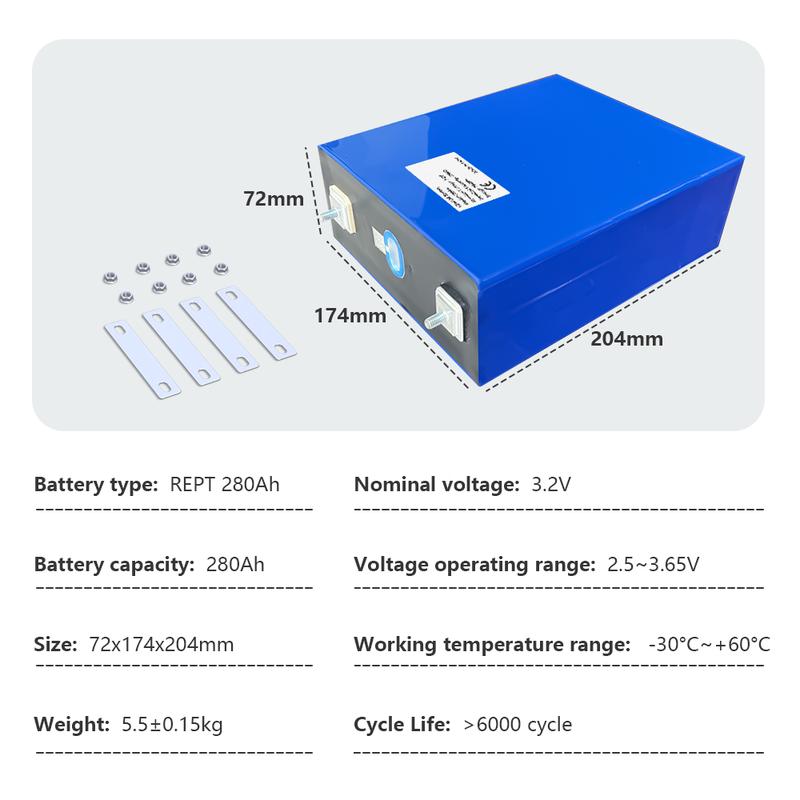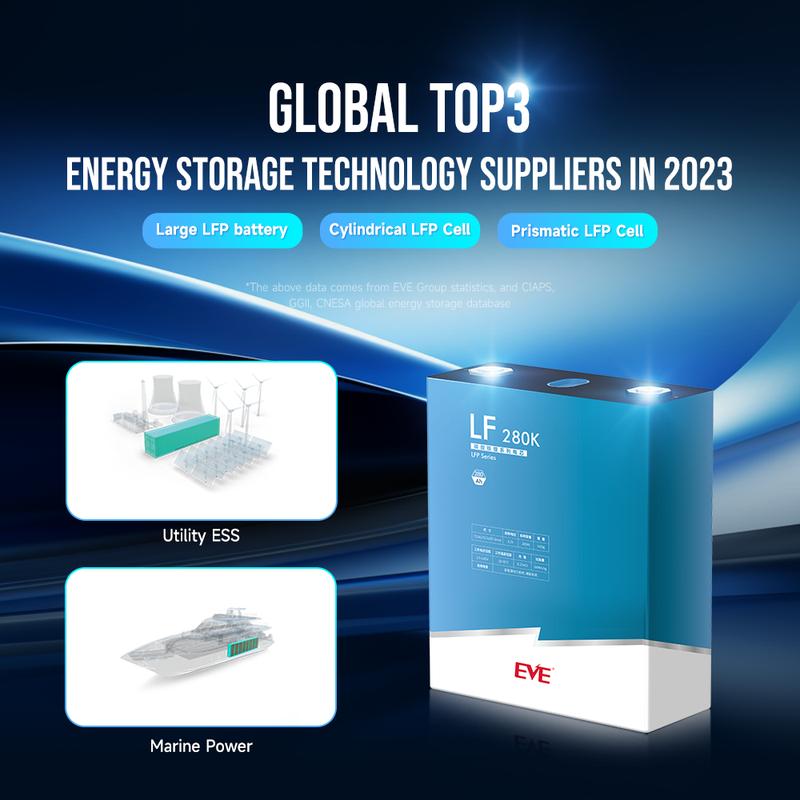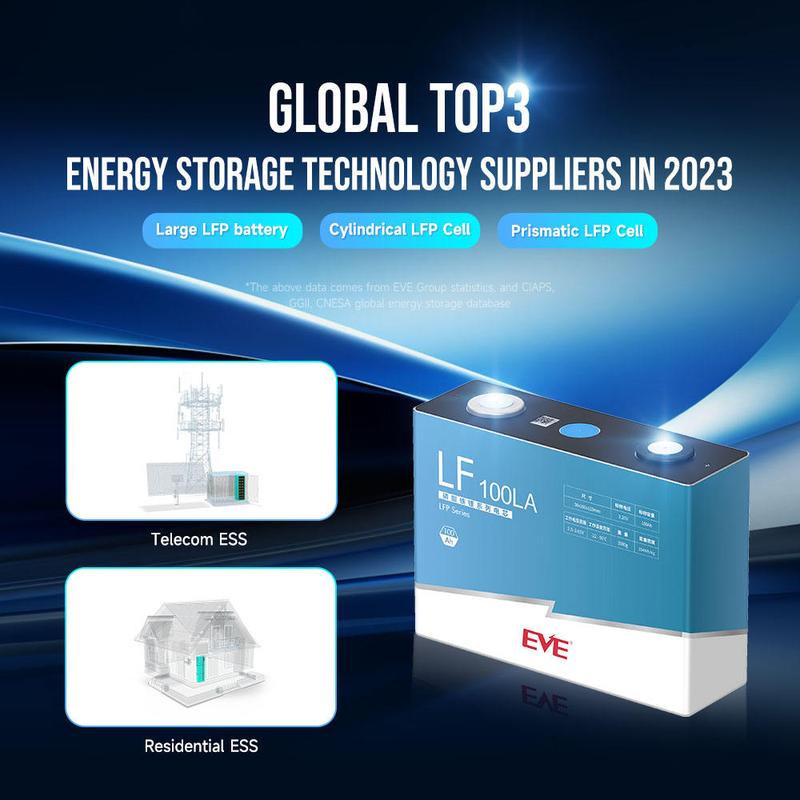-
Guoli Building, Zhonghang Road
EVE LF280K Lifepo4 3.2V 280ah Grade A
Attributes
| Item | Description |
| Max Load Quantity (cells) | 8 |
| Cycle Life | 8000 cycles |
| Model Number | LF280K |
| Operating Temperature (°C) | -30~60°C |
| Cathode Materials | LiFePO4 |
| Brand Name | EVE |
| Battery Type | liquid |
| Dimension (LWH) | 208 * 206+175mm |
| Weight | 5420kg±300g |
| Place of Origin | Hubei, China |
| Type | Li-ion |
| Certificate | CE/ROHS/UN38.3/MSDS/UL |
| Operating Temperature | Discharge: -20-55°C |
| Charge: 0-55°C | |
| Payment Terms | T.T. Paypal. Union Westen. LC |
| Charging Time | Fast Charge |
| Name | LF280K 3.2V 280Ah Rechargeable LiFePO4 Battery |
| Cycle Life | 8000 Times (with fixture) |
| Application | Household Energy Storage |
Core Application Scenarios
- Solar Energy Storage Systems
- Off-Grid/Grid-Tied Solutions: Ideal for residential solar panels, remote solar farms, and hybrid systems. The 3.2V 280Ah cells efficiently store daytime solar energy for nighttime use or backup during power outages. Supports flexible 48V/24V configurations.
- Advantages: With 8,000 deep cycles (retaining ≥80% capacity)3, this battery reduces long-term replacement costs. Pair with a BMS for optimal performance in solar arrays.
- Electric Mobility & Transport
- RVs & Campers: Powers appliances like air conditioners, refrigerators, and LED lighting. Operates in **-20°C to 55°C** temperatures, making it suitable for extreme climates.
- Industrial Vehicles: Delivers 2C pulse discharge (560A peak current) for forklifts, golf carts, and electric boats, ensuring reliable performance under heavy loads.
- Home & Industrial Backup Power
- Emergency UPS: Safeguards critical infrastructure (e.g., hospitals, data centers) with built-in PCM/PCB protection against overcharge, short circuits, and thermal runaway.
- Off-Grid Living: Powers remote cabins, agricultural pumps, and telecom stations. Features a **<3% monthly self-discharge rate**, ensuring readiness even after prolonged storage.
Note
- Installation & Maintenance
- Safety Gear: Wear insulated gloves and goggles during assembly. Use included free busbars for secure, low-resistance connections.
- Environment: Store in dry conditions (<70% humidity) and avoid direct sunlight. Operate within 0°C–55°C for charging and **-20°C–55°C** for discharging.
- Safety Protocols
- Prohibited Actions: Never puncture, immerse in water, or expose to fire. Damaged cells must be isolated and recycled professionally.
- Regular Checks: Monitor cell voltage consistency monthly. Use active balancing modules in parallel setups to extend lifespan.
- Logistics & Support
- EU Stock Availability: Ships from Poland warehouses with 7-day delivery to Germany, France, Italy, and more. Includes VAT, duties, and UN-certified packaging.
- Warranty: 5-year limited warranty. Optional Bluetooth modules enable real-time monitoring of SOC, temperature, and voltage.
10 things to note when purchasing products from China
Help Center
Have a query? Please check this question and answers
It is prohibited to mix different brands or batches of batteries for reasons including:
Capacity difference: CATL 280Ah and EVE LF280K actual capacity error ±3%, parallel connection may lead to reverse charging loss;
Inconsistency in internal resistance: BMS equalization fails after mixing, accelerating the attenuation of the weakest monomer in the group (barrel effect).
Solution: Separate the capacity and selection before grouping to ensure that the difference in internal resistance is less than 1mΩ and the difference in voltage is less than 10mV.
The products are UN38.3 (aviation safety certification), CE (European Union access), RoHS (no hazardous substances) certified
In the case that the description of the battery you are shopping for states that it still works at that temperature, the capacity drops to 50%-60% at -20°C, it is recommended:
Optional low temperature electrolyte (boost 10%-15% capacity);
Add preheating system (e.g. solar energy storage scenario).
High temperature protection: 55°C is the upper working limit, need to:
Avoid direct sunlight (add sunshade for outdoor installation);
Regularly check the cooling ducts and keep the distance between batteries ≥ 5cm
It is strongly recommended to use the original matching charger. The battery supports 1C standard charging (280A current), if using a non-specialized charger may lead to:
Risk of overcharging: over-voltage of ordinary lead-acid charger (e.g. 58.4V for Li-ion Sainty) may trigger the protection board to lock up;
Loss of efficiency: non-matching chargers may not be able to activate the BMS equalization function, resulting in widening the voltage difference between single units.
Recommended configuration: 48V system using 58.4V lithium iron phosphate special charger, support Bluetooth module real-time monitoring of the charging status.
Protective measures: wear insulating gloves and goggles, use matching copper rows (free connectors included) to reduce contact resistance;Environmental requirements: working temperature -20°C~55°C, humidity <70%, avoid direct sunlight;
Parallel/series connection rules: parallel connection requires the same cell capacity, series connection requires the configuration of active equalization BMS.
Q: How to extend the overall life of the battery pack?
A: Follow the “barrel theory” – check the weakest cell regularly:
Use a voltmeter to check the consistency of the cells every month;
Avoid frequent fast charging (>1C) or deep discharging (<10%);
For energy storage scenarios, we recommend charging to 90% and discharging to 20% to slow down the degradation.
Lithium iron phosphate battery capacity drops to 50-60% of normal at -20°C (about 70% for ternary batteries)
If the voltage of the whole pack is lower than the nominal value or the temperature of a single unit is too high, it may be due to wrong connection, short circuit or poor cell consistency.
Suggestion: Check whether the electrode connection is loose or reversed;
Use active equalization module to balance the voltage of the cell;
Replace the monobloc with abnormal performance
